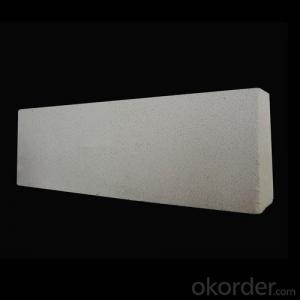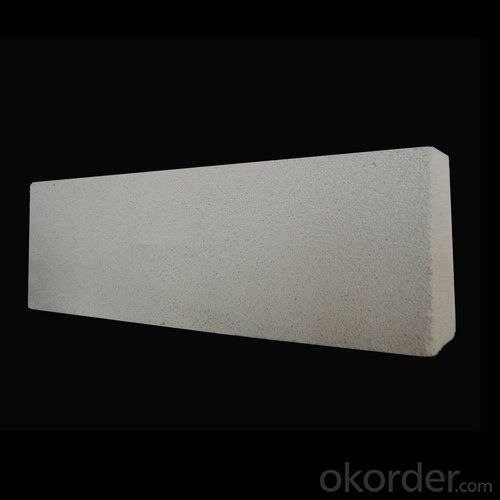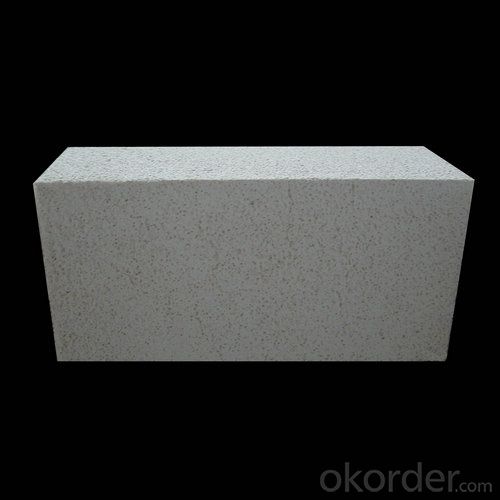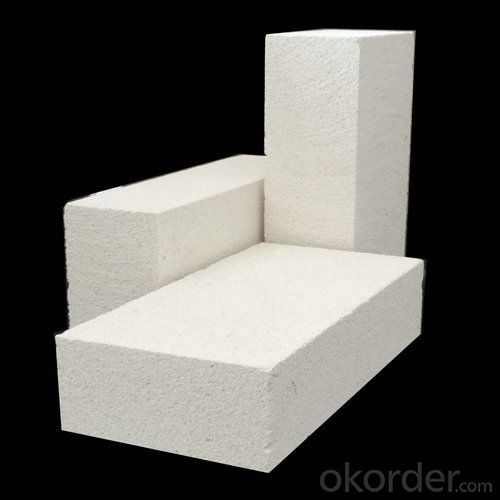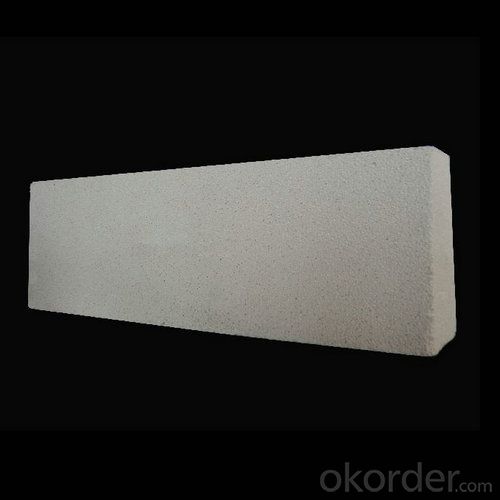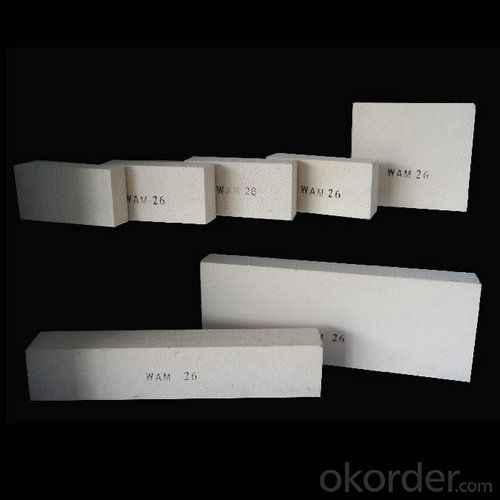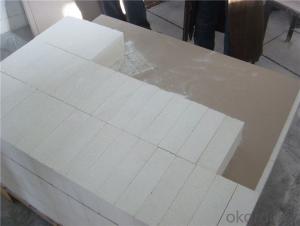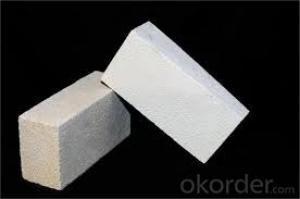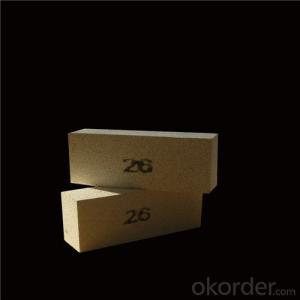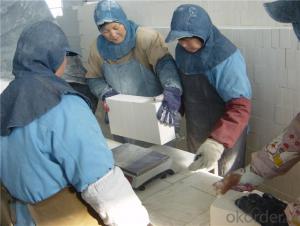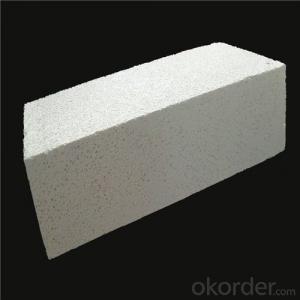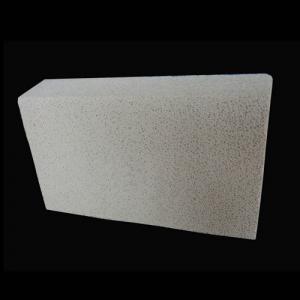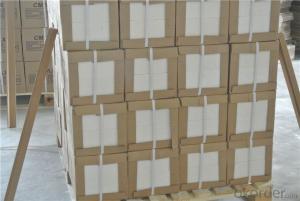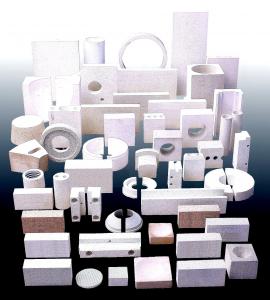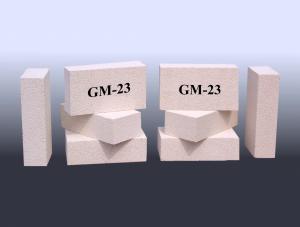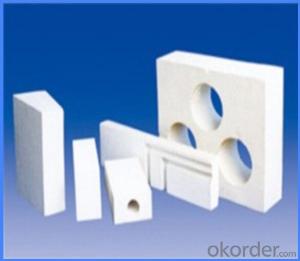Insulating Fire Brick - GJM23 for Hot Face Lining
- Loading Port:
- Tianjin
- Payment Terms:
- TT OR LC
- Min Order Qty:
- 1 m.t.
- Supply Capability:
- 20000 m.t./month
OKorder Service Pledge
OKorder Financial Service
You Might Also Like
General Information of Insulating Firebricks
CMAX insulating firebricks are classified under temperature between 1300℃ to 1700℃, manufactured from high purity alumina clay.
Feature of Insulating Firebricks
Light weight and low thermal conductivity
Low heat storage
Low iron and impurities
High thermal shock resistance
Application of Insulating Firebricks
CMAX insulating firebricks can be used as a hot face lining directly exposed to the heat or as a backup insulation layer in iron and steel mills, non-ferrous foundries, petrochemical, ceramic, glass.
Images of Insulating Firebricks
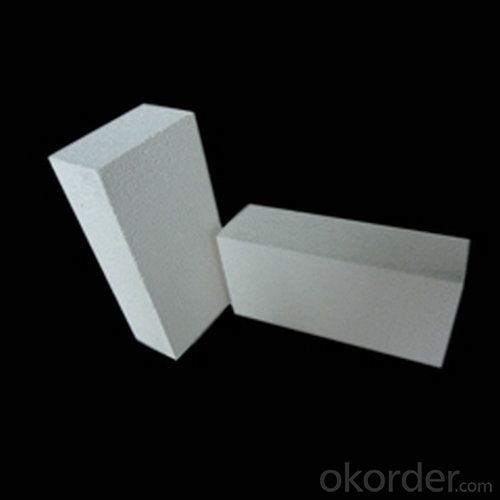
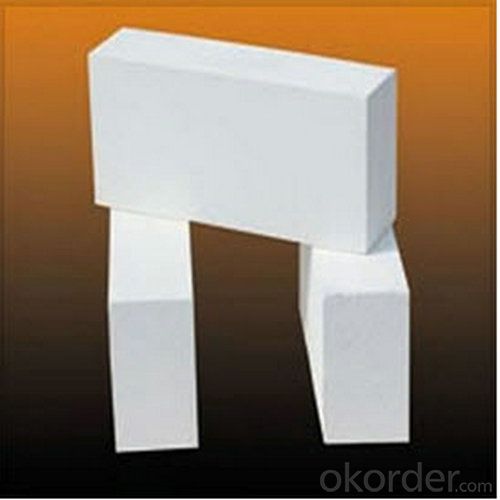
Technical Data of Insulating Firebricks
INSULATING FIRE BRICK---GJM23
Classification Temperature (℉/℃) 2300/1260
Bulk Density (g/cm3) ≤0.5
Thermal Conductivity
800℃, W/m.K ≤0.18
1000℃, W/m.K ≤0.20
Reheating Linear Change (%) 1230℃×12h
≤0.5
Chemical Composition (%)
Al2O3 ≥45
Fe2O3 ≤1.0
Company Introduction
Who CNBM is
CNBM is a Fortune 500 and a governmental owned National Building Material company in Beijing, China.
What CNBM Can Do
We can supply ALL KINDS OF REFRACTORIES BRICK/CASTABLE and CERAMIC FIBER PRODUCTS in high quality and competitive price.
What Certification CNBM Have
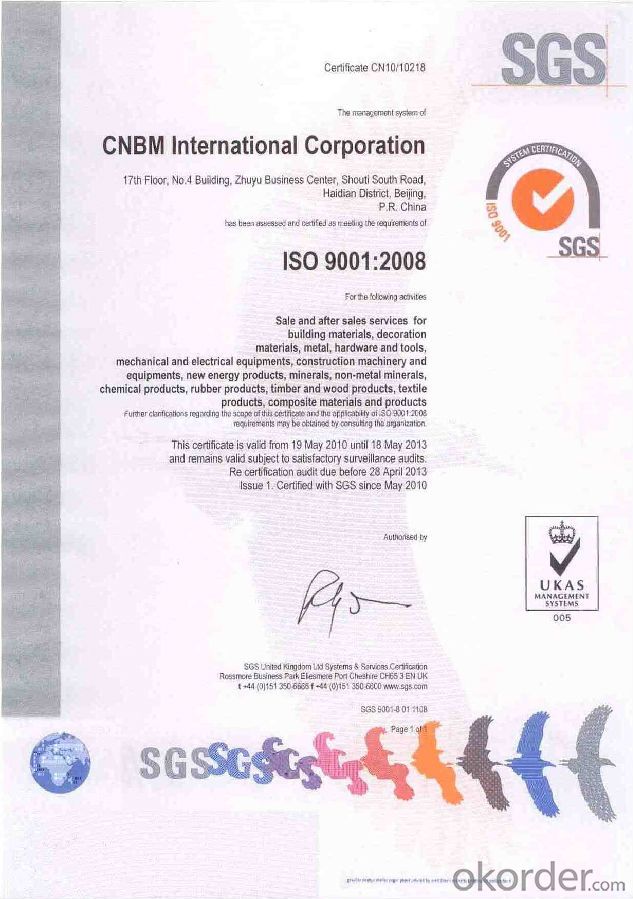
FAQ
If I need your offer, what information do you need?
In order to choose suitable products, it will be appreciated to provide us the information, such us specification, technical data, order quantity, products application etc.
If any question, please contact us freely.
How do you control the products quality?
With strict quality control system throughout the materials selection and production process, our refractory and ceramic fiber products quality is effectively controlled to meet customer requirements.
From the raw materials selecting, our quality control begin. The quality certificates of raw materials are required and each batch will be tested before using. During production, the quality control are conducted by workers and then each piece will be sorted and examined by quality supervisor.
I’m not satisfied with the refractory materials I used before, can you propose more suitable pro
Yes. Please give us the problems you faced, your requirements and the technical data of the products you used before. That we will give you our suggestion and propose the solution based on your special requirements.
What’s the lead time for my order?
It depends on customers’ requirements and our production schedule. And usually we need 30-60 days for refractory bricks,10-25 days for unshaped refractory materials and 10-20 days for ceramic fiber blankets.
Can you offer Door-to-Door delivery?
Yes, but only for some countries such us U.S., UAE, Saudi Arabia, Iran, and Russia, etc.
What is the minimum quantity?
There is no minimum order quantity. Depending on the item and processing, there may be a minimum production required, however we can offer a quotation based only on the quantity you need.
- Q: Can insulating fire bricks be used in the construction of rotary kilns?
- Yes, insulating fire bricks can be used in the construction of rotary kilns. These bricks are designed to provide thermal insulation and are commonly used in high-temperature applications such as kilns. Insulating fire bricks can help to reduce heat loss, increase energy efficiency, and ensure consistent and uniform temperature distribution within the rotary kiln.
- Q: Can insulating fire bricks be used in power plants?
- Indeed, power plants have the capability to utilize insulating fire bricks. These bricks, also referred to as refractory bricks, are specifically designed to endure extreme temperatures and offer exceptional thermal insulation. They find extensive usage in a wide range of industrial settings, including power plants. The combustion of fossil fuels or the process of nuclear fission within power plants generates a substantial amount of heat. In order to ensure efficient operations and prevent heat loss, power plants employ insulating fire bricks to line the walls, floors, and ceilings of furnaces, boilers, and other areas that experience high temperatures. Insulating fire bricks possess a low thermal conductivity, thereby effectively reducing heat transfer. This serves to conserve energy and enhance the overall efficiency of power plants. Furthermore, these bricks exhibit high resistance to thermal shock, enabling them to withstand abrupt temperature changes without sustaining any cracks or fractures. In addition, insulating fire bricks are lightweight and simple to install, making them an ideal choice for power plant applications. They also possess resistance to chemical corrosion, which is crucial in power plants where various gases and chemicals are present. To summarize, insulating fire bricks are an appropriate option for power plants due to their ability to endure high temperatures, offer exceptional thermal insulation, and resist thermal shock and chemical corrosion. Incorporating these bricks into power plant applications serves to enhance energy efficiency and maintain optimal operating conditions.
- Q: Can insulating fire bricks be used in sewage treatment plants?
- Yes, insulating fire bricks can be used in sewage treatment plants. These bricks are designed to withstand high temperatures and provide insulation, making them suitable for various industrial applications, including sewage treatment plants where high temperatures may be present. Insulating fire bricks help to reduce heat loss and improve energy efficiency in these facilities.
- Q: Can insulating fire bricks be used in the construction of drying ovens?
- Indeed, the utilization of insulating fire bricks is feasible for the fabrication of drying ovens. These bricks possess a design that enables them to exhibit minimal thermal conductivity. Consequently, they possess the ability to proficiently retain heat and hinder heat dissipation. This characteristic renders them a prime material for the construction of drying ovens, as they can effectively sustain a consistent and regulated temperature within the oven. Moreover, insulating fire bricks demonstrate resistance to elevated temperatures, thereby establishing their suitability for deployment in drying ovens that necessitate such conditions.
- Q: Can insulating fire bricks be used in the construction of glass fusing kilns?
- Indeed, glass fusing kilns can utilize insulating fire bricks. These bricks are specifically crafted to endure extreme temperatures and deliver exceptional insulation, rendering them fitting for kiln application. They aid in retaining heat and guaranteeing uniform distribution within the kiln, a critical component of the glass fusing procedure. Moreover, insulating fire bricks possess the advantages of being lightweight and long-lasting, making them an ideal choice for kiln construction. They effectively minimize heat loss, enhance energy efficiency, and uphold a steady temperature inside the kiln, all of which are pivotal factors for achieving successful glass fusing.
- Q: What is the difference between cement foamed thermal insulation board and thermal insulating brick?
- Of course, the market now has a lot of insulation bricks, and some insulation bricks can only do external wall insulation, such as sand, aerated concrete blocks. Some also only do the interior wall insulation, such as gray aerated concrete blocks, and some insulation bricks directly to the base, thus omitting the internal and external insulation, such as concrete composite insulation block.
- Q: Are insulating fire bricks resistant to impact or mechanical stress?
- Yes, insulating fire bricks are generally resistant to impact and mechanical stress due to their high strength and durability.
- Q: Can insulating fire bricks be used in the construction of gas kilns?
- Yes, insulating fire bricks can be used in the construction of gas kilns. Insulating fire bricks are designed to have low thermal conductivity, which means they can help retain heat and improve energy efficiency in a kiln. Gas kilns require proper insulation to ensure that heat is evenly distributed and maintained within the kiln chamber. Insulating fire bricks can be used to line the walls, floor, and ceiling of the kiln, creating a barrier that helps to prevent heat loss and improve the kiln's performance. Additionally, insulating fire bricks are lightweight and easy to work with, making them a popular choice for kiln construction projects.
- Q: Can insulating fire bricks be used in thermal oxidizers?
- Yes, insulating fire bricks can be used in thermal oxidizers. Insulating fire bricks are designed to have low thermal conductivity, meaning they can effectively reduce heat transfer and conserve energy in high-temperature applications. Thermal oxidizers are devices used to treat industrial exhaust gases by oxidizing pollutants at high temperatures. By using insulating fire bricks in the construction of thermal oxidizers, heat can be contained within the system, ensuring efficient combustion and minimizing heat loss to the surroundings. This not only improves the overall thermal efficiency of the thermal oxidizer but also helps to reduce energy consumption and operating costs. Additionally, insulating fire bricks are highly resistant to thermal shock and have excellent insulating properties, making them suitable for the harsh and demanding conditions typically found in thermal oxidizers.
- Q: Can insulating fire bricks be cut or shaped to fit specific applications?
- Yes, insulating fire bricks can be cut or shaped to fit specific applications. Insulating fire bricks are made from lightweight refractory materials, typically ceramic fibers or lightweight aggregates, which allows them to be easily cut or shaped without compromising their structural integrity. They can be cut with a saw, knife, or other cutting tools to fit specific dimensions or shapes required for various applications, such as lining kilns, furnaces, or fireplaces. Additionally, insulating fire bricks can be shaped by using molds or by hand molding during the manufacturing process. This flexibility in cutting and shaping makes insulating fire bricks highly versatile and suitable for a wide range of industrial and residential applications.
Send your message to us
Insulating Fire Brick - GJM23 for Hot Face Lining
- Loading Port:
- Tianjin
- Payment Terms:
- TT OR LC
- Min Order Qty:
- 1 m.t.
- Supply Capability:
- 20000 m.t./month
OKorder Service Pledge
OKorder Financial Service
Similar products
Hot products
Hot Searches
Related keywords
